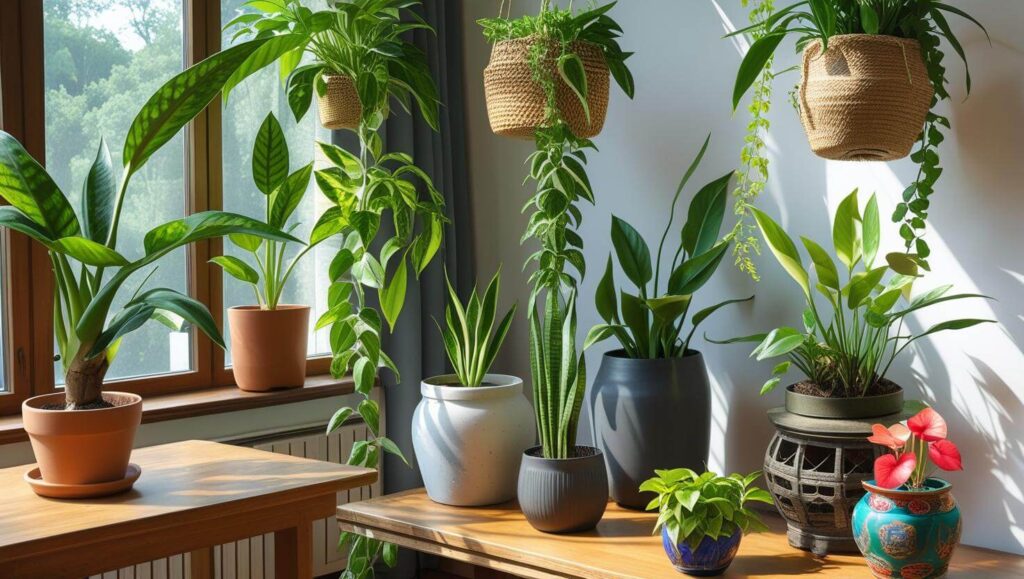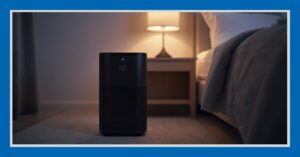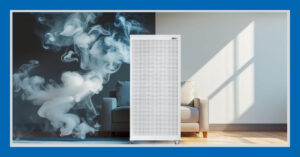
Best Air Purifying House Plants for the Bedroom: Do They Really Work?
by Peemanus Tongpiem / September 19, 2025
Searching for air purifying house plants for the bedroom is a hot trend among health lovers and green home decorators. Social media is filled with lists like “10 Best Home Air Purifying Plants” or “Top 20 Plants for Sleep.”
But the real question remains—how much do home air purifying plants actually improve indoor air quality?
This article covers everything: scientific evidence, limitations, how many plants you would really need, how to choose the right plants, practical bedroom placement tips, and whether a HEPA air purifier is still essential for clean air.
Do Air Purifying House Plants Really Purify the Air?
The idea became popular thanks to NASA’s 1989 Clean Air Study, which showed that certain air purifying house plants could reduce volatile organic compounds (VOCs) like benzene, formaldehyde, and trichloroethylene in sealed chambers.
However, real homes are not sealed labs. Indoor ventilation dilutes pollutants, so the effect of a few plants is tiny. Modern scientific reviews confirm that to see a measurable impact, you’d need an unrealistically high number of plants per room.
The US EPA clearly states there is no strong evidence that a reasonable number of home air purifying plants can significantly improve air quality. Overwatering can even increase humidity and promote mold growth in soil.
Meanwhile, a 2022 study by RHS & University of Birmingham showed plants may reduce certain pollutants, but only under specific conditions—species type, quantity, and ventilation rate.
The WHO recommends controlling indoor pollutants at the source, plus ventilation and filtration, as the foundation for healthy indoor air.
Evidence-based summary: Plants have potential in sealed test environments but limited effect in normal homes. Their real value lies in well-being, relaxation, and humidity balance. The main tools for clean air remain source control, ventilation, and HEPA air purifiers.
How Many Plants in a Room to Purify Air?
This is one of the most common questions people ask. NASA’s chamber study suggested 1 plant per 100 square feet. But in real homes, experts estimate you’d need dozens of plants in one room to see significant VOC reduction.
So if you only add 2–3 plants in your bedroom, the effect will be mostly psychological (calmness, decor) rather than measurable purification.
👉 The practical answer: enjoy a few plants for sleep and comfort, but rely on a HEPA home air purifier for real clean air.
How to Choose Air Purifying Plants for Your Bedroom
Since we now understand the limitations, our goal when choosing air purifying house plants should be:
- Safe and non-toxic (especially for homes with kids/pets).
- Easy to care for, suited to bedroom light and temperature.
- Visually soothing, reducing stress and anxiety.
- Slightly balancing humidity (without overwatering).
Selection tips:
- Low–medium light tolerance: Choose green foliage plants that thrive in indirect sunlight.
- Well-draining soil: Prevents mold and root rot.
- Moderate watering: Let soil dry before watering.
- Pet/child safety: Some species are toxic if ingested, so choose safe ones or place them out of reach.
Best Air Purifying House Plants for the Bedroom (Beginner-Friendly)

Here are the top home air purifier plants that are beautiful, resilient, and popular choices:
- Snake Plant (Sansevieria) – Tolerates low light, drought-resistant, perfect for corners.
- Pothos / Devil’s Ivy (Epipremnum aureum) – Fast-growing vine, easy care, great for hanging pots.
- Aglaonema (Chinese Evergreen) – Colorful foliage, shade-tolerant, moderate water needs.
- Spider Plant (Chlorophytum comosum) – Hardy, grows fast, tolerates indirect light.
- Rubber Plant (Ficus elastica) – Large glossy leaves, stylish and bold.
- Peace Lily (Spathiphyllum) – Beautiful white flowers, tolerates low light, adds elegance.
- Philodendron (varieties) – Big tropical leaves, adds dimension to decor.
- ZZ Plant (Zamioculcas zamiifolia) – Almost indestructible, thrives in low light, minimal water.
- Monstera (Monstera deliciosa) – Trendy leaf design, prefers bright indirect light.
- Fiddle Leaf Fig (Ficus lyrata) – Stylish statement plant, needs consistent care and light.
Many of these were included in the NASA study, but today they are valued more for decor, mood-boosting, and relaxation rather than actual purification.
Placement Tips for Bedroom Plants
- Place near windows with indirect sunlight.
- Leave airflow space (not too close to walls or headboards).
- Use pots with drainage holes and airy soil.
- Follow the golden watering rule: water only when soil feels dry.
- Dust leaves regularly for healthy photosynthesis.
How to Actually Improve Bedroom Air Quality

While home air purifying plants help with comfort, here’s how to truly improve indoor air quality:
- Control pollution sources – Avoid harsh sprays and VOC-heavy cleaners. Choose low-formaldehyde furniture and safe paints.
- Ventilate smartly – Open windows when outdoor air quality is good. Use fans or mechanical systems if possible.
- Use a HEPA air purifier – An air purifier with HEPA + carbon filters captures fine particles, allergens, and odors.
- Measure results – Use an indoor air quality monitor to track PM2.5, VOCs, and humidity, then adjust ventilation or purifier use.
Benefits of Air Purifying Plants in the Bedroom
Even though their pollutant removal is limited, home air purifier plants still offer proven benefits:
- Stress reduction – Scientific studies show plants lower anxiety and improve mood.
- Humidity balance – They add slight moisture, easing dryness in throat and nose.
- Sleep environment – The natural look makes bedrooms more relaxing and comfortable.
Modern science emphasizes well-being and psychological benefits over “strong air cleaning.”
Risks and Precautions with Bedroom Plants
- Excess moisture = mold – Overwatering can create musty smells and mold.
- Stale water = pests – Empty saucers to avoid mosquitoes.
- Toxicity – Some species can irritate pets or kids if ingested.
- Very low light – Use grow lights if necessary to keep plants healthy.
Air Purifying Plants vs. HEPA Air Purifiers
| Factor | Air Purifying House Plants | HEPA Air Purifier |
|---|---|---|
| Main Benefit | Aesthetic, stress relief, mild humidity | Proven filtration of PM2.5, VOCs, allergens |
| Effectiveness | Minimal in real homes | Strong, measurable |
| Maintenance | Watering, soil care, leaf cleaning | Filter replacement, power use |
| Risks | Mold, toxic species | Noise, energy cost |
| Best Role | Complement for well-being | Main tool for clean air |
FAQ: Air Purifying House Plants
Q: Can I keep plants in my bedroom?
A: Yes. Choose shade-tolerant ones (Snake Plant, Pothos) and ventilate properly.
Q: Can plants replace an air purifier?
A: No. EPA states that normal numbers of plants don’t significantly reduce pollutants. Plants are supplementary; purifiers are primary.
Q: How many plants in a room to purify air?
A: Studies suggest you’d need dozens per room—far more than practical. A few plants improve comfort, not purification.
Q: Are some plants dangerous?
A: Yes, some species contain toxic sap. If you have pets or kids, choose non-toxic varieties or place them out of reach.
Final Thoughts
Adding air purifying house plants to your bedroom is a great way to relax, reduce stress, and create a calming environment. They’re excellent plants for sleep when combined with cozy bedroom design. Plants are a wonderful complement—not a substitute—for clean indoor air

Peemanus Tongpiem
เราให้ความสำคัญกับอาหารที่เรารับประทาน 3 มื้อต่อวัน แต่เรากลับละเลยอากาศที่เราใช้หายใจมากกว่า 10 ครั้งต่อนาที เป็นเหตุให้ผมเริ่มค้นคว้าและเผยแพร่ความรู้เรื่องมลพิษทางอากาศ เพื่อให้ผู้คนตระถึงความสำคัญของการใช้เครื่องฟอกอากาศเพื่อสุขภาพที่ดีขึ้น







